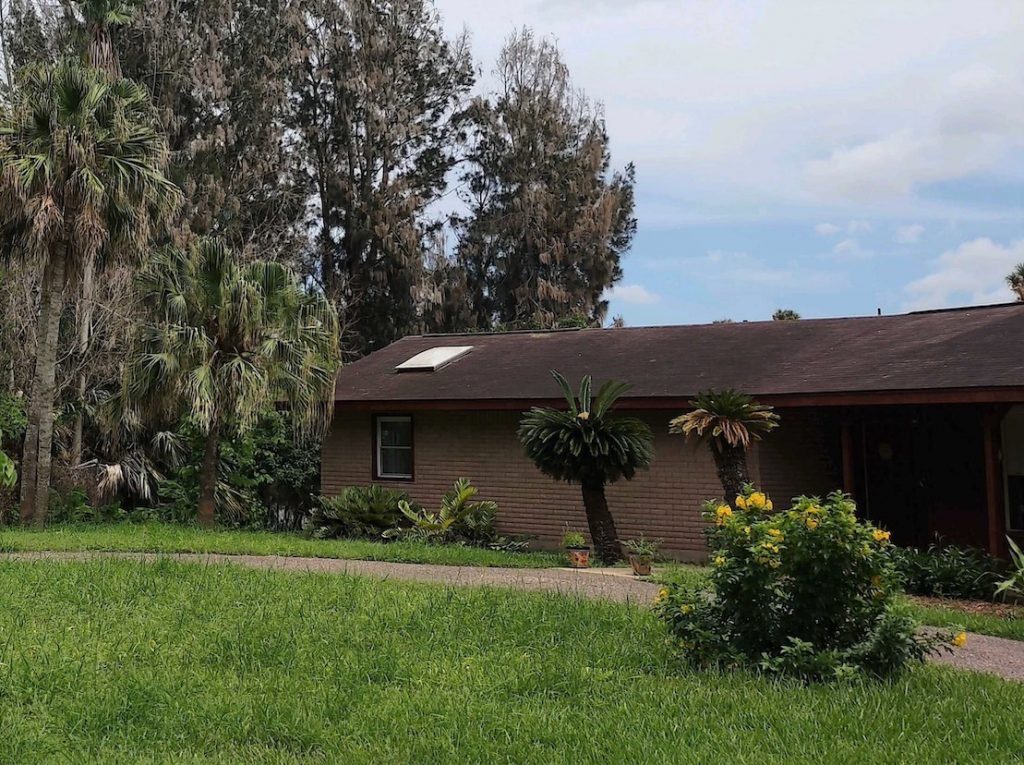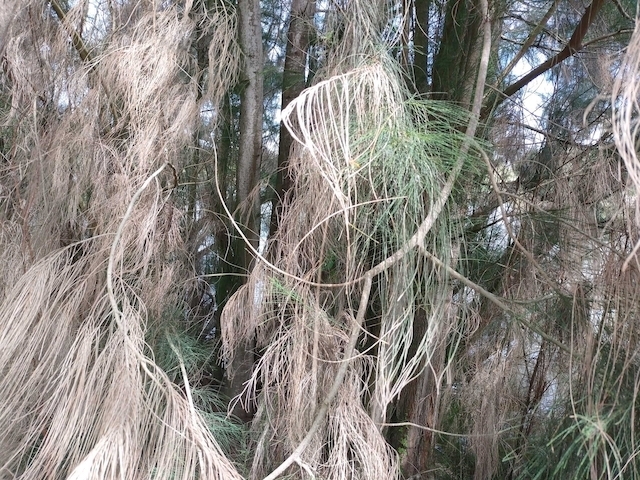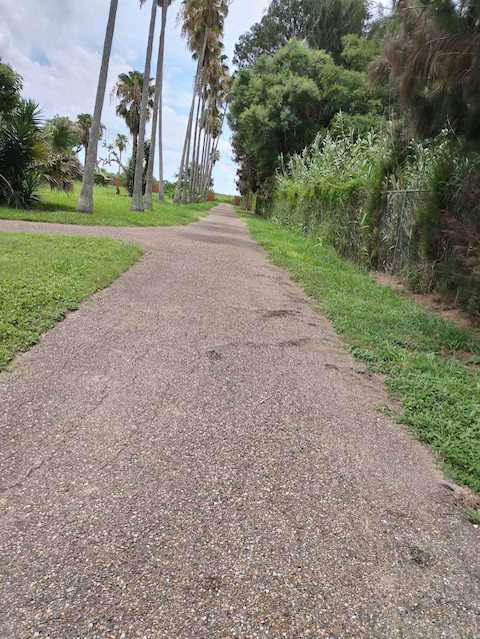by Janis Silveri

When I moved to Texas in 2004, I noticed several large trees with vast root systems growing on the east side and near the Resaca as a continuation of the neighbor’s landscaping. They divided the property in the 1960s. Texans use these large trees as barriers and buffers in rural areas. I was told they were Australian Pines by many including the Cameron County Master Gardener president.

Recently, I got some tree work done by an arborist who informed me they were Athels (Tamarix aphylla), not Australian Pines (Casuarina equisetifolia) and they belonged to the Salt Cedar family. He had testified on behalf of a plaintiff suing a neighbor for the damage his Athels had caused to his landscape. I started noticing how pervasive Athels were in the Rio Grande Valley. Since I live in Bayview, I wrote a point paper for the Town Council but, decided not to present it. I thought it would be better to educate those interested in native trees and they could educate others.
Whether or not Athels are classified as invasive, they do nothing for the environment. They overgrow nearby trees blocking the sun. They kill nearby trees and plants due to their expansive root system that sprouts new trees. They are of no value to insects and birds and nothing grows under them. The only animal activity I have seen is Turkey Vultures roosting on their branches and a few squirrel nests. Below is the point paper on Athels with information provided by the local Forest Engineer and Arborist, Salvador E. Alemany.
DISCUSSION PAPER ON ATHELS IN TEXAS RIO GRANDE VALLEY (RGV)
Should I remove Athel trees (Tamarix aphylla) from my property or ask my neighbors to remove theirs if they are or have the possibility of negatively affecting my property?
Pros
Prevent destruction of other plants and trees
Maintain property value – Large, ugly, aggressive trees that destroy other plants, trees
Increase growth of natives, bringing in more birds and butterflies
Frees up the land under the trees to grow new plants since nothing grows under Athels
Increases size, blooms, production of trees/plants where Athels blocked water and sun
Town could support with ordinance against planting invasives like other municipalities
Cons
Expense of tree removal and landscaping after Athels are gone; alienate neighbors
Athels are huge trees (between 60 to 80 feet, 18 to 22 inches in diameter) with no value. Sometimes Athels are confused with Salt Cedars or Australian Pines. They are an invasive species in Texas due to their uncontrollable growth. Its reproduction by seeds or buds is extremely aggressive. Their fallen needles exude salt extracts into the soil preventing existance of other plant species. The network of very shallow root systems can be easily observed up to a distance up to 350 feet from the tree. They are of no value to humans or animals. Athels contain few insects so they’re of no value to birds which don’t even nest in them. Athels can have a negative effect on property value as they are an unwanted, invasive species. Aesthetically, these invasives are detrimental to the general property landscape since it limits and gradually destroys nearby plants and trees forming compact clones in the area. It is not a species to plant in urban areas and is not recommended in many landscape city codes.
BACKGROUND
Athel (Tamarix aphylla) belongs to the Salt Cedar family and grows in the arid areas of north and northeastern Africa, the Middle East, the Arabian Peninsula, Iran, and other areas nearby. Arid habitats with cold winters and summers with hot extremes and little precipitation, alkaline soils, and saltires are perfect habitats for their development and growth. In American nonresidential tropical areas, it was grown for its resistance to alkaline and saline soils and rapid growth. Most of the Athels in the RGV were grown for buffers and barriers that worked in rural–not urban areas.
When planted in areas of greater precipitation or resacas, the amountof water the tree absorbs by volume and density of wood is monumental. This feature and its invasive manner and harmful effects on vegetation have resulted in Athels being classified as invasive in Texas.

The Athel’s radical root system can spread through the owner’s and/or neighbor’s property negatively affecting the landscape and all the vegetation therein. This can affect the aesthetic and property values and can be a significant financial loss in landscaping and possibly citrus crops. In South Texas, its expansion is mostly due to outbreaks from its roots, making it undesirable in urban areas because of the problems it causes. The species has an ability to regrow and respond to incredible stress known as epicormic growth. Athel control requires total removal and poisoning of the tree. Cutting or pruning will promote a greater problem, due to its aggressive epicormic response and radical flare-ups. These are inherent characteristics of the species to stay and expand responding to stress.
RECOMMENDATIONS
Educate RGV residents and property owners about Athels
Offer tree removal and root poison options
Include an ordinance or guidance on what trees and other vegetation are considered invasive Provide a list of native plants and trees that attract birds and butterflies